
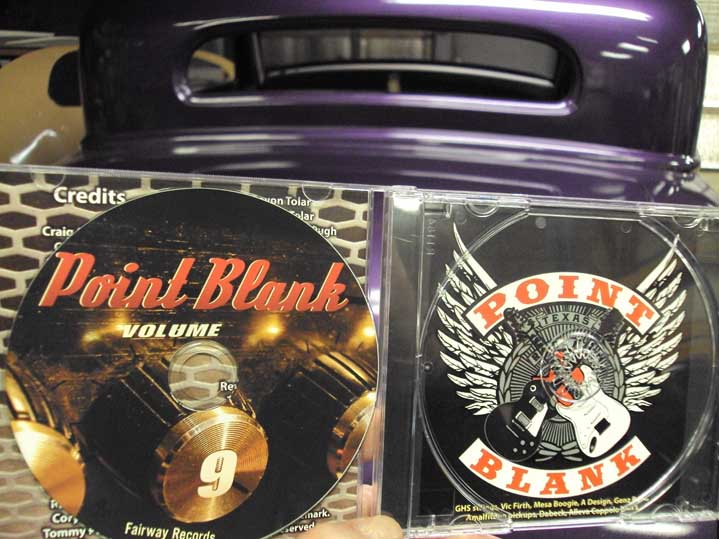
|
The new album from Southern Rockers POINT BLANK is their ninth and is aptly titled “Volume 9.” Recently I sat down with original POINT BLANK member, Lead Singer John O'Daniel, to get some additional, and very interesting, history of the band as well as get to the bottom of exactly what the group was trying to accomplish with this new and rather unconventional approach to POINT BLANK album making since this album definitely strays from the hard core “in your face” style of Rock for which the band has become known. John O'Daniel, a/k/a “Johnny O” should know. He's been there through all of the ups and downs with POINT BLANK for years.
|
|
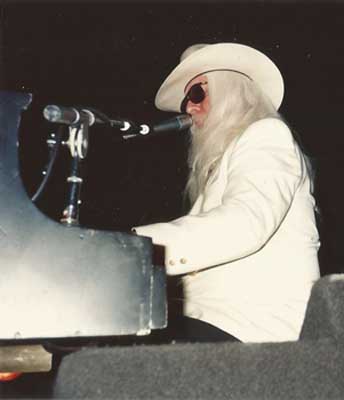 “I was in Tulsa, Oklahoma, working with LEON RUSSELL at the time and that's when I got the call from (Drummer) Buzzy Gruen about Rusty and the POINT BLANK thing. That's where I was when I heard about Rusty. I had only met him once in a music store called Whittle's in Dallas and I had no earthly idea we would ever be playing together. All I knew about him was that he was left-handed. Buzzy Gruen told me he (Rusty) got a deal with ZZ TOP's manager and they're going to put a band together and, if you don't get down here, then Michael Harrison's gonna get the gig. Michael's a good friend. He's just a singer and a local guy so I hocked a stereo and caught a plane flight to Houston and I've played with Rusty ever since. That was forty-two years ago. Buzzy, Rusty and everyone was in Houston playing at “The Cellar” club.” “I was in Tulsa, Oklahoma, working with LEON RUSSELL at the time and that's when I got the call from (Drummer) Buzzy Gruen about Rusty and the POINT BLANK thing. That's where I was when I heard about Rusty. I had only met him once in a music store called Whittle's in Dallas and I had no earthly idea we would ever be playing together. All I knew about him was that he was left-handed. Buzzy Gruen told me he (Rusty) got a deal with ZZ TOP's manager and they're going to put a band together and, if you don't get down here, then Michael Harrison's gonna get the gig. Michael's a good friend. He's just a singer and a local guy so I hocked a stereo and caught a plane flight to Houston and I've played with Rusty ever since. That was forty-two years ago. Buzzy, Rusty and everyone was in Houston playing at “The Cellar” club.”
|
|
Tragedy #1 of 2: The Entire Band Escapes Death
|
|
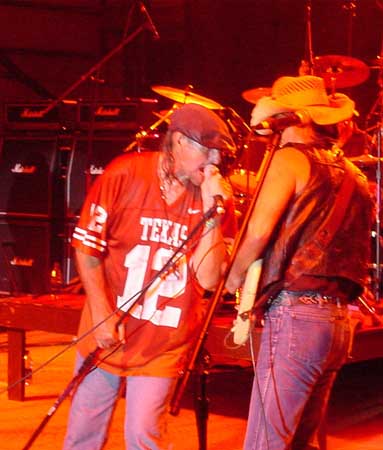 “When SKYNYRD started going down is when we started going down. We were on our way back...I think it was from Harlingen, Texas...somewhere down in South Texas and we had already booked about sixty-two shows with LYNYRD SKYNYRD and we were the special guests for LYNYRD SKYNYRD on those shows. They were already sold out. Sixty-two sold out shows, including Europe and all over the world, and we were on our way to Baton Rouge to play a show with LYNYRD SKYNYRD and at the end of that show the plan was we were going to load all of our shit on their plane and we were all going to fly together for that tour. So we got the phone call...No, actually we heard it on the radio...this was before cell phones....and we hear on the radio that the plane crashed so we stopped at a pay phone and called the office and Bill's secretary said that: “When SKYNYRD started going down is when we started going down. We were on our way back...I think it was from Harlingen, Texas...somewhere down in South Texas and we had already booked about sixty-two shows with LYNYRD SKYNYRD and we were the special guests for LYNYRD SKYNYRD on those shows. They were already sold out. Sixty-two sold out shows, including Europe and all over the world, and we were on our way to Baton Rouge to play a show with LYNYRD SKYNYRD and at the end of that show the plan was we were going to load all of our shit on their plane and we were all going to fly together for that tour. So we got the phone call...No, actually we heard it on the radio...this was before cell phones....and we hear on the radio that the plane crashed so we stopped at a pay phone and called the office and Bill's secretary said that:
'Yeah, we heard about it but we've not substantiated anything. Can you just keep heading into Houston (we were going to go right through Houston anyway) and when you get there call us.'
When we got to Houston we stopped and called the office and Bill said:
'Yeah, they had a wreck. You all just come on in.'
and we went to the office with sixty-two shows and a brand new album out...I think it was “Second Season” that had just come out and so we ended up just sitting on our asses for seven months because the tour had already been booked up. Our tour went down and we sat there with a new album for almost seven months and from that point on it was downhill. 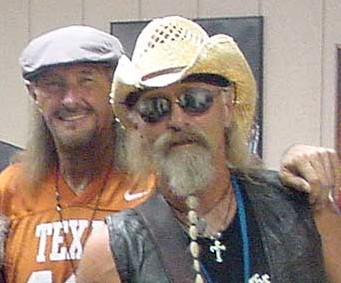 Our new album was out and we couldn't promote it so that's why I say it wasn't good. Then we did “Airplay” and “The Hard Way” and we were on the road so damn much when we did “The Hard Way” we didn't get to write a whole lotta stuff cause, we just didn't, and after that album is when the guys decided they wanted to be more like JOURNEY and that's when I had to depart. I guess you can call it a musical disagreement. It was late 1981. I just told them: Our new album was out and we couldn't promote it so that's why I say it wasn't good. Then we did “Airplay” and “The Hard Way” and we were on the road so damn much when we did “The Hard Way” we didn't get to write a whole lotta stuff cause, we just didn't, and after that album is when the guys decided they wanted to be more like JOURNEY and that's when I had to depart. I guess you can call it a musical disagreement. It was late 1981. I just told them:
‘Well, if that's what you guys want to do then you all need to go do that cause I don't like it. I don't do it well. I don't enjoy it and I'm out! If you don't wanna stick to your guns and do what we do and take what comes along then I'm gonna have to move along and I moved along.”
|
And then came (singer) Bubba Keith. “Bubba is a good singer but going from my style of singing to his is quite a difference. I'm not saying one is any better than the other--just different, and our followers, our base crowd, didn't go for it too much. Bubba is a great guy and a good friend of mine. He's just a...he's a little guy...and it's kind of hard for him to be believable when he's talking about some of the things we're talking about and that we write about. So his stuff...I call his stuff more...I call it ‘West Coast Style’ which is a little bit more commercial than what we do.”
|
|
Tragedy #2 of 2: Rusty Burns Knocks At Heaven’s Door
|
|
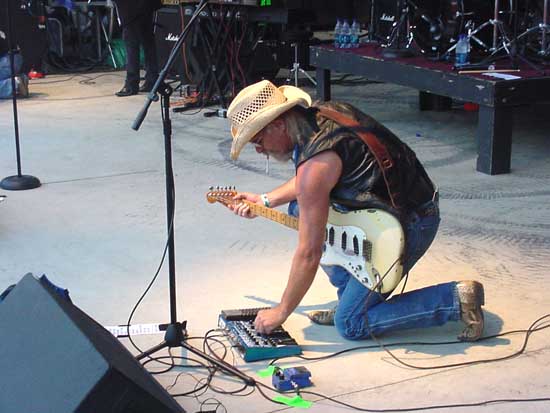 To date, with the homegoing of four of its former members, the band's resiliency somehow perseveres and the new music gets out. It could have been much worse if God was not looking down on them. Somewhere around the making of the “Airplay” album, which features the entire band in skydiving gear on the front cover, tragedy struck again for POINT BLANK as Rusty Burns nearly killed himself in a skydiving accident. To date, with the homegoing of four of its former members, the band's resiliency somehow perseveres and the new music gets out. It could have been much worse if God was not looking down on them. Somewhere around the making of the “Airplay” album, which features the entire band in skydiving gear on the front cover, tragedy struck again for POINT BLANK as Rusty Burns nearly killed himself in a skydiving accident.
“The dumb asses,” Johnny O said, “they went out skydiving and the wind was blowing about twenty-five miles per hour. Rusty caught a guest of wind just as he got to the ground and it blew him off track and he landed cattywampus some way or another. He broke his back. He broke his neck and he was torn up pretty bad. I was already out of the band at that time but I booked POINT BLANK in a little old town called Evadale, Texas and I was there at the show because I was the promoter. We were waiting for Rusty to show up and finally get the phone call saying Rusty had an accident and he's not going to make it so Kim (Davis) had to play all by himself. He had to play both his and Rusty's parts. I forgot I was not in the band when Bubba (Keith) came in and said:
“Well, I'll play some rhythm guitar” and I turned around and said:
'No the fuck you won't! If Kim says he can do it then he can do it.'
We did a pretty good show, considering. He came through like a champ.”
And that's how those POINT BLANK boys roll. They do a pretty good show. They come through like a champ.
|
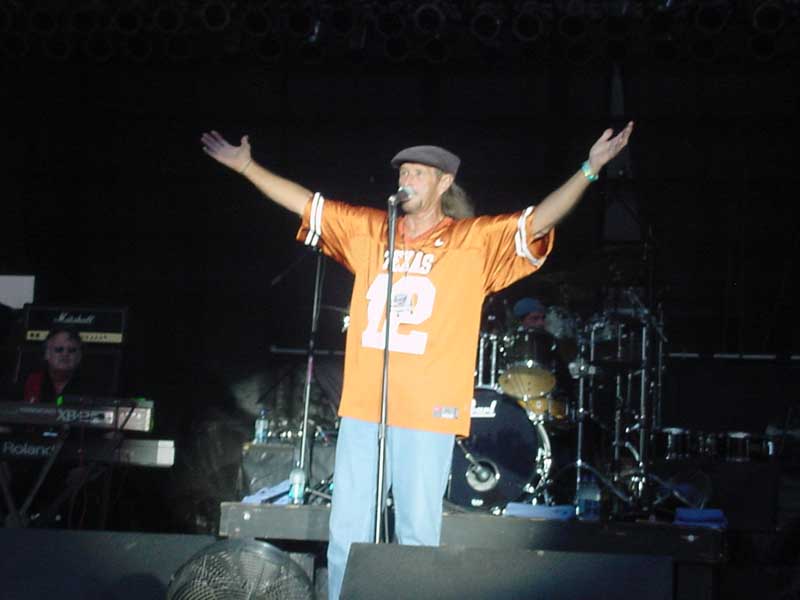
|
“The whole “Volume 9” album,” O'Daniel told me, “is a chance to let everybody hear Rusty and Mouse and these guys play something besides slam bang Rock & Roll. Rusty is so talented. His slide work on the song “Amigos” is great and sounds just like David Lindley” and while veteran studio musician David Lindley, who has played with just about everybody in the business, is known by many for his trademark lap steel guitar, Rusty Burns took a different approach.
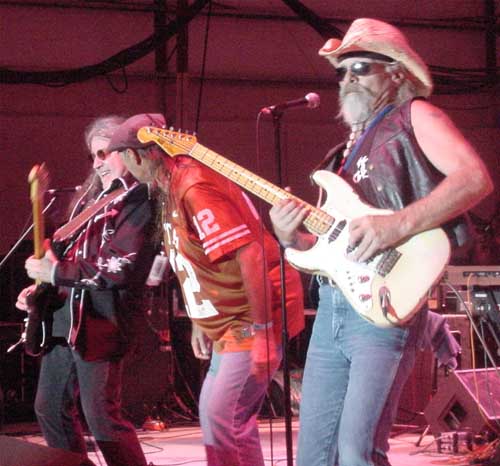 “He's doing it all on the Stratocaster.” O'Daniel said. “He's got that kind of talent but nobody's ever heard it. I just thought it would be great to let everybody hear that kind of stuff.” “He's doing it all on the Stratocaster.” O'Daniel said. “He's got that kind of talent but nobody's ever heard it. I just thought it would be great to let everybody hear that kind of stuff.”
In producing this new “Volume 9” album, I instantly recognized not one, but two, production techniques that neither I, nor any of the band’s worldwide fan base, had ever heard before.
The first of these can be found on “Heart of a Fool” which a Southern Rock legend, Greg Allman, co-wrote with O’Daniel and Jack Williams.
As both a writer and musician, who has followed POINT BLANK for years, I never thought I’d live long enough to ever say this but, for the first time in POINT BLANK history, here's an album that features the use of a saxophone on one of their songs.
“It is kind of jazzy and it’s a very bluesy tune,” O’Daniel said. “That’s a song I wrote with Greg Allman and Jack Williams.” When I asked Johnny O if he might be worried about sticking his head on the chopping block for fans to say:
‘Here goes POINT BLANK using a saxophone in a bluesy, almost flirting with a mellow jazzy direction, and hurting their hard rock reputation,’ he was quick to respond.
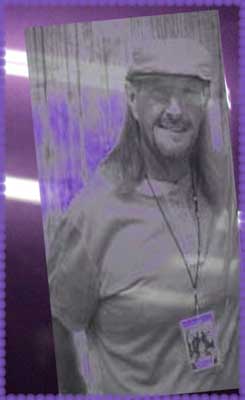 “I’m not concerned with that. We spent forty-years building a reputation. If we decide to do somebody else’s, or a different kind of song, it’s just because we can. It has nothing to do with changing the band. I love the song. When I wrote this song, with Greg and Jack, and then played it for Rusty, we all liked it and, when it came to that (saxophone) solo, Rusty tried several things: a slide and this, that, and the other, and nothing seemed to fit correctly so I said: “I’m not concerned with that. We spent forty-years building a reputation. If we decide to do somebody else’s, or a different kind of song, it’s just because we can. It has nothing to do with changing the band. I love the song. When I wrote this song, with Greg and Jack, and then played it for Rusty, we all liked it and, when it came to that (saxophone) solo, Rusty tried several things: a slide and this, that, and the other, and nothing seemed to fit correctly so I said:
‘Why don’t we call Bill Eden (Bill Eden was the guy that did the solo) and have a sax put in there for something different?'
That’s just what we wanted to do. It has nothing to do with a change of direction or any of that thing. We listened to it and we thought it was kind of neat and it’s different. That’s what it’s there for.”
|
In addition to the never before use of a saxophone on a POINT BLANK record, the “Volume 9” album also makes use of, for the very first time, a special recording technique, and/or effect, which electronically modifies the voice of powerhouse vocalist John O’Daniel. During track number eight on the album the listener clearly hears a specially inserted, but very tasteful and effective, voice modification to O’Daniel’s vocals which makes his voice sound similar to the legendary, Rudy Vallee, who was a crooner known as one of the very first teen idols and whose signature trademark was singing through a megaphone. The song in which this POINT BLANK voice alteration technique is used just happens to be a song I instantly recognized from my days working in and on local TV here in Ohio.
We were the only station in town bold enough to undertake not a recorded, but live, call in show where viewers could see the latest music videos and then call in to rate the tunes and give shout outs to friends which we would air live between songs. One such song, amongst the many that were being sent to us for airing on our show, was an absolutely wonderful piece called “Start the Car.” This song was written by, not a female but male, singer/songwriter by the name of Jude Cole and, while I have not seen nor heard from Jude Cole ever since, I absolutely loved his composition called “Start the Car.” You can imagine my surprise when I picked up POINT BLANK's “Volume 9” only to hear the tune completely re-done in the twin lead guitar format with guitarists Rusty Burns and Mouse Mayes tearing it up. Both Burns & Mayes put in time with Jim Dandy's BLACK OAK ARKANSAS during the POINT BLANK hiatus.
|
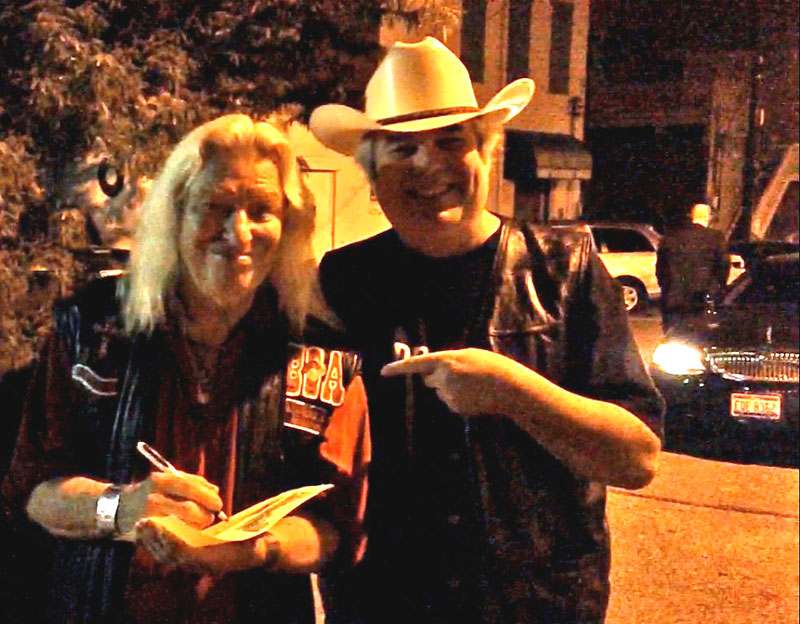
|
With his limo driver awaiting in the background, that's BLACK OAK ARKANSAS vocalist, Jim Dandy, with Rick Flynn, following a concert on 9-3-11 at the historic Madison Theater in Kentucky. The night time image shown is a still frame captured from high definition video.
|
“We got that tune, ''Start the Car,'' from Bill Ham,” Johnny O told me, “I have no idea where he got it. Somebody had shopped it around...I don't know if Jude did it or what...and it ended up on his desk. He liked it. We liked it and Bill thought it would be nice for the album.”
Regarding the very first time in POINT BLANK recording history, in which a no-nonsense, unaltered “live” sound has been strayed away from, in favor of an electronic alteration, Johnny O had this to say:
“Rusty and I did the final mix. We worked on each tune together. Oddly enough, this thing (voice alteration) happened in the final mix. We were through recording and it was all done. We were at Mike Gage’s studio and the whole band was there. When it got to that part I said that we really needed to do something to the vocals there to make it stand out. We were all talking about different things and Gage said:
‘Hey, check this out!'
and he just threw this effect on, actually kind of like a joke, for the heck of it.
When Rusty and I heard it we thought it sounded kind of like a phone call and that fits right in with the song--kind of like you’re making a phone call to the old lady telling her:
‘I’ve had enough of this…start the car. We gotta go!’
We’ve never done it before (voice alteration) and thought:
‘What the hell!’
That’s what happens when you give a monkey a machine gun. You come up with all kinds of stuff.”
|
|
Point Blank’s “Automobile”
|
|
“She's cherry red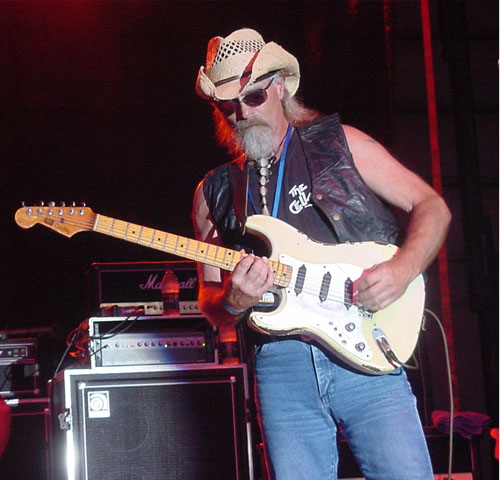
My '36 Ford.
And I still don't know
How fast she goes.
And all the girls
They all wanna ride
It's so hard
To keep 'em all satisfied
In my automobile.”
Bobby Boyd is an excellent songwriter. Among his credits are the songs “Bless the Broken Road” for RASCAL FLATTS and “Two of a Kind Workin’ on a Full House” for GARTH BROOKS—both of which hit number one on the Country charts. He also wrote the fourth track on “Volume 9” simply called “Automobile.” The “Volume 9” album is actually living proof that a relationship not only still exists between POINT BLANK and their fans, but also between man and man's second best friend, his automobile. The fans, in fact, actually financed 100% of this album by sending, via Kickstarter, donations from all over the USA and Canada as well as from all over Europe where Southern Rock and the band’s huge fan base remains strong. One-fifth of “Volume 9” makes mentions of cars. While the POINT BLANK rendition of Jude Cole’s “Start the Car” merely sees fit to only mention the use of an automobile, it is the song “Automobile” which goes into detail about the actual feeling a guy gets while seated behind the wheel and driving his automobile. The song was originally recorded in 1995 on Johnny O’s “Legacy” solo CD. It is a neatly customized version of composer Boyd's adventures with “my new old car”--a cherry red 1936 Ford. The car profiled in this song is just three years newer than one of the most famous and widely recognized red hot rods in the world…an automobile that POINT BLANK and ZZ TOP founder, Bill Ham, helped to make famous…Billy Gibbons’ 1933 Ford Coupe known as “The Eliminator.” With “Automobile” one sees exactly what Ronnie Van Zant meant by saying:
“I don’t care for fancy music if your shoes can’t shuffle around.”
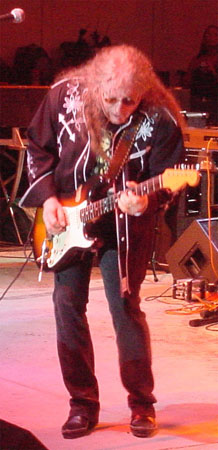 There’s nothin’ fancy going on here--just a hard driving bass and an up-tempo, bluesy, Texas shuffle that, if nothing else, makes you smile. This song, while not the harder edge Rock that POINT BLANK has become known for, is still a quality piece of work and just a fun song. I would not be going out on a limb to say don't be surprised if this number makes its way into the band's future touring schedule as well as into the hearts of POINT BLANK fans and automobile lovers everywhere. I still can’t figure out which song I like better. Is it “Start the Car” or “Automobile?” There’s nothin’ fancy going on here--just a hard driving bass and an up-tempo, bluesy, Texas shuffle that, if nothing else, makes you smile. This song, while not the harder edge Rock that POINT BLANK has become known for, is still a quality piece of work and just a fun song. I would not be going out on a limb to say don't be surprised if this number makes its way into the band's future touring schedule as well as into the hearts of POINT BLANK fans and automobile lovers everywhere. I still can’t figure out which song I like better. Is it “Start the Car” or “Automobile?”
“These songs on “Volume 9,” O'Daniel said, ''are pretty songs, just great songs and the production values are very sound. It makes this album sound very clean. I’m proud of it. The string ensembles, the various guitar parts that Rusty placed in the background, all gave Rusty a chance to show his actual guitarmanship on a much bigger scale than on Rock & Roll licks. The songs are fun to listen to but they’re almost impossible to reproduce on stage. We only have two guitars and we’re only six players. If we, for instance, had nine players we could probably pull it off. There’s always going to be soul in everything I do, and I put a whole lot of it into “Volume 9.” 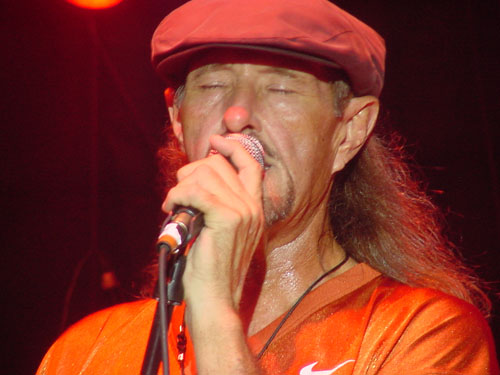 ''Volume 9” was our way of saying: ''Volume 9” was our way of saying:
‘Hey, We can boogie with the best of ‘em but listen what else we can do.’
Now we’re going to go back and say:
’But this is where we live! We did not desert that area but kind of trespassed in another area for a minute.’
With the next album, and that’s the whole concept with the next album, we’re going to go back where we started, take a little pressure off and relax. We’re going to put together a product that keeps the integrity of the band. We’re going to go with a little bit less production and a little bit more aggression. I hope this is not confusing but I call it kind of ''Loosely tight.'' The production thing on “Volume 9” was different and we did it because it’s something we’ve never before been able to do. But the more you produce a song, the more stuff you put in it, the less you can do with each instrument. In Rusty’s case, if you’re going to put three or four guitar parts together, he can’t have the freedom to play whatever he wants to. He has to play a certain regimen that fits with the others. When you take that production away you take Rusty back to exactly like how he was when we first started. He turned his amp on and played and we didn’t add anything to it. There were no extra tracks and he could reproduce it on stage. We want our next album to be not so overly produced. We’re thinking about the live performance. We want an album where the studio stuff sounds live and lets us do what we do and play what we play—a little less production, a little more aggression, and a little more emotion.”
|
|
The Re-Entry of Bill Ham & the Future of Point Blank
|
|
“Neither Rusty or myself are dumb enough to think we are record executives. When it comes to things of that nature like scribing a deal with somebody, making a distributing deal, or anything like that, that’s when I call Bill. After thirty years with Bill, why not? He’s our friend and he’s going to help us. It’s kind of like a partnership. I would say Bill is our business advisor. He’s also going to produce the next album and we’re going to record it in his studio using his engineer, David Dickinson. I’m sure Rusty will be doing some engineering too. With the upcoming new album,” Johnny O said, “Bill Ham had a talk with us yesterday. He said:
‘You guys need to go back to being who you are. Go back to doing what you do. Go back to your roots. Go back to your Blues roots and your Rock & Roll style—more like “Uncle Ned” “Highway Star” and “Free Man.’
“Rusty and I have discussed it in private, Johnny O continues, “We both feel the same way. We’ve already had the limousine rides. We’ve had the plane rides. We’ve had the partying and the groupies and been through all that crap. Now we’re at the age where we just want to play and have fun and make a living. That’s all we’re gonna do for the rest of our lives.”
So welcome back into the fray, Bill Ham, and congratulations to POINT BLANK on an excellent diversionary album called “Volume 9” but it is this next venture, in Bill Ham’s studio, that I am truly looking forward to. You’ll make it. You’ll do a pretty good show. You’ll come through like a champ!
|
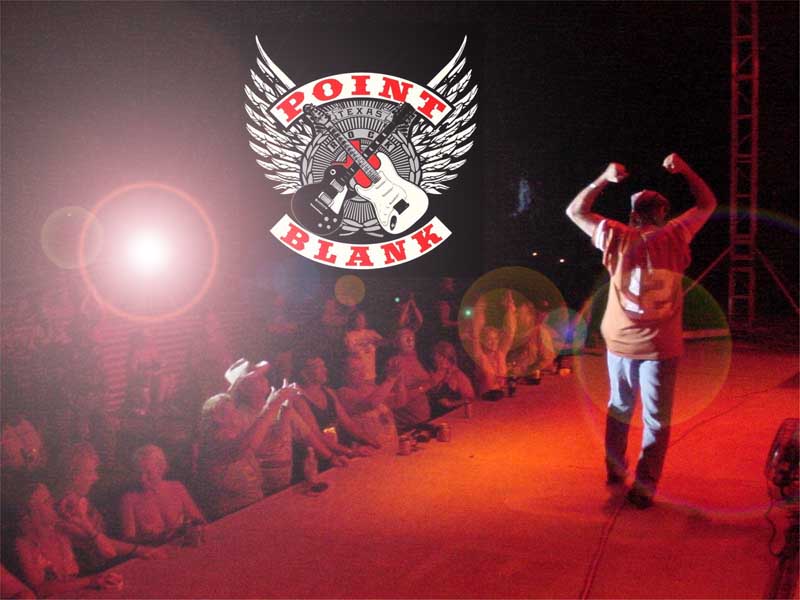
The John O'Daniel Interview: Startin' Up POINT BLANK'S Automobile & More on VOLUME 9
All photos & text © 2015 by Rick Flynn for Rick Flynn Productions
POINT BLANK is a registered trademark of B.H. Assoc. LLC ~ All Rights Reserved
|
|





 “I was in Tulsa, Oklahoma, working with LEON RUSSELL at the time and that's when I got the call from (Drummer) Buzzy Gruen about Rusty and the POINT BLANK thing. That's where I was when I heard about Rusty. I had only met him once in a music store called Whittle's in Dallas and I had no earthly idea we would ever be playing together. All I knew about him was that he was left-handed. Buzzy Gruen told me he (Rusty) got a deal with ZZ TOP's manager and they're going to put a band together and, if you don't get down here, then Michael Harrison's gonna get the gig. Michael's a good friend. He's just a singer and a local guy so I hocked a stereo and caught a plane flight to Houston and I've played with Rusty ever since. That was forty-two years ago. Buzzy, Rusty and everyone was in Houston playing at “The Cellar” club.”
“I was in Tulsa, Oklahoma, working with LEON RUSSELL at the time and that's when I got the call from (Drummer) Buzzy Gruen about Rusty and the POINT BLANK thing. That's where I was when I heard about Rusty. I had only met him once in a music store called Whittle's in Dallas and I had no earthly idea we would ever be playing together. All I knew about him was that he was left-handed. Buzzy Gruen told me he (Rusty) got a deal with ZZ TOP's manager and they're going to put a band together and, if you don't get down here, then Michael Harrison's gonna get the gig. Michael's a good friend. He's just a singer and a local guy so I hocked a stereo and caught a plane flight to Houston and I've played with Rusty ever since. That was forty-two years ago. Buzzy, Rusty and everyone was in Houston playing at “The Cellar” club.”
 “When SKYNYRD started going down is when we started going down. We were on our way back...I think it was from Harlingen, Texas...somewhere down in South Texas and we had already booked about
“When SKYNYRD started going down is when we started going down. We were on our way back...I think it was from Harlingen, Texas...somewhere down in South Texas and we had already booked about Our new album was out and we couldn't promote it so that's why I say it wasn't good. Then we did “Airplay” and “The Hard Way” and we were on the road so damn much when we did “The Hard Way” we didn't get to write a whole lotta stuff cause, we just didn't, and after that album is when the guys decided they wanted to be more like JOURNEY and that's when I had to depart. I guess you can call it a musical disagreement. It was late 1981. I just told them:
Our new album was out and we couldn't promote it so that's why I say it wasn't good. Then we did “Airplay” and “The Hard Way” and we were on the road so damn much when we did “The Hard Way” we didn't get to write a whole lotta stuff cause, we just didn't, and after that album is when the guys decided they wanted to be more like JOURNEY and that's when I had to depart. I guess you can call it a musical disagreement. It was late 1981. I just told them: To date, with the homegoing of four of its former members, the band's resiliency somehow perseveres and the new music gets out. It could have been much worse if God was not looking down on them. Somewhere around the making of the “Airplay” album, which features the entire band in skydiving gear on the front cover, tragedy struck again for POINT BLANK as Rusty Burns nearly killed himself in a skydiving accident.
To date, with the homegoing of four of its former members, the band's resiliency somehow perseveres and the new music gets out. It could have been much worse if God was not looking down on them. Somewhere around the making of the “Airplay” album, which features the entire band in skydiving gear on the front cover, tragedy struck again for POINT BLANK as Rusty Burns nearly killed himself in a skydiving accident. “He's doing it all on the Stratocaster.” O'Daniel said. “He's got that kind of talent but nobody's ever heard it. I just thought it would be great to let everybody hear that kind of stuff.”
“He's doing it all on the Stratocaster.” O'Daniel said. “He's got that kind of talent but nobody's ever heard it. I just thought it would be great to let everybody hear that kind of stuff.” “I’m not concerned with that. We spent forty-years building a reputation. If we decide to do somebody else’s, or a different kind of song, it’s just because we can. It has nothing to do with changing the band. I love the song. When I wrote this song, with Greg and Jack, and then played it for Rusty, we all liked it and, when it came to that (saxophone) solo, Rusty tried several things:
“I’m not concerned with that. We spent forty-years building a reputation. If we decide to do somebody else’s, or a different kind of song, it’s just because we can. It has nothing to do with changing the band. I love the song. When I wrote this song, with Greg and Jack, and then played it for Rusty, we all liked it and, when it came to that (saxophone) solo, Rusty tried several things:
 There’s nothin’ fancy going on here--just a hard driving bass and an up-tempo, bluesy, Texas shuffle that, if nothing else, makes you smile. This song, while not the harder edge Rock that POINT BLANK has become known for, is still a quality piece of work and just a fun song. I would not be going out on a limb to say don't be surprised if this number makes its way into the band's future touring schedule as well as into the hearts of POINT BLANK fans and automobile lovers everywhere. I still can’t figure out which song I like better. Is it “Start the Car” or “Automobile?”
There’s nothin’ fancy going on here--just a hard driving bass and an up-tempo, bluesy, Texas shuffle that, if nothing else, makes you smile. This song, while not the harder edge Rock that POINT BLANK has become known for, is still a quality piece of work and just a fun song. I would not be going out on a limb to say don't be surprised if this number makes its way into the band's future touring schedule as well as into the hearts of POINT BLANK fans and automobile lovers everywhere. I still can’t figure out which song I like better. Is it “Start the Car” or “Automobile?” ''Volume 9” was our way of saying:
''Volume 9” was our way of saying: